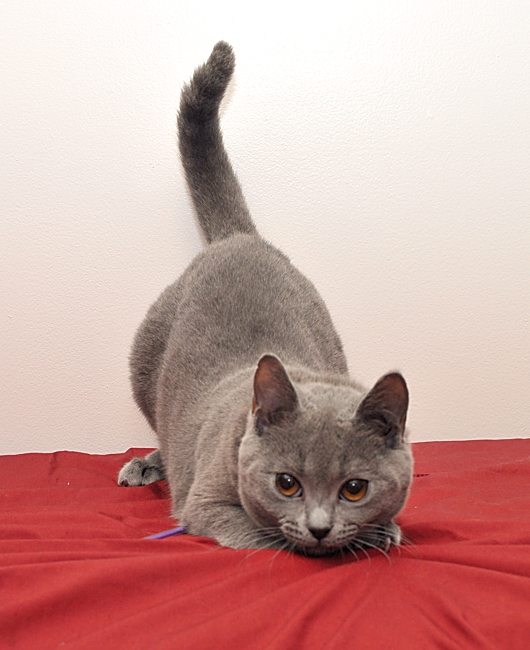Key Takeaways
-
Chartreux cats are known for their blue-gray coats, quiet demeanor, and affectionate nature.
-
Adopting a Chartreux cat from a rescue center can cost between $50 and $150, but additional costs like food, litter, and vet visits should be considered.
-
Chartreux cats have distinct physical traits like copper to gold eyes and a robust, muscular build.
-
They are generally quiet cats but may communicate through chirps and purrs instead of meows.
-
Chartreux cats adapt well to various living environments, making them great pets for families, singles, and even those with other pets.
Adopting Chartreux Cats from Rescue: Your Comprehensive Guide
Adopting a pet is a significant decision, and choosing the right breed can make all the difference in your experience as a pet owner. Chartreux cats are a unique and wonderful breed that can bring joy to any household. In this guide, I’ll walk you through everything you need to know about adopting a Chartreux cat from a rescue center, including costs, identifying traits, and care tips.

“Chartreux kittens – We breed, show and …” from www.bluecatfarm.com and used with no modifications.
Why Choose a Chartreux Cat?
Chartreux cats are not only beautiful but also known for their calm and affectionate nature. They have been around for centuries and are often described as the “silent companions” due to their quiet demeanor. This breed is perfect for anyone looking for a low-maintenance, loving pet.
Adoption Costs and Financial Considerations
Adopting a Chartreux cat from a rescue center is often more affordable than buying one from a breeder. However, there are several costs to consider beyond the initial adoption fee.
Factors Affecting Adoption Fees
The cost of adopting a Chartreux cat can vary based on several factors, including the cat’s age, health, and the rescue center’s policies. Generally, adoption fees range from $50 to $150. These fees often cover initial veterinary care, vaccinations, and spaying or neutering.
Additional Costs to Prepare For
Besides the adoption fee, you’ll need to budget for ongoing expenses such as:
-
Food: High-quality cat food can cost $20-$50 per month.
-
Litter: Expect to spend about $10-$20 per month on cat litter.
-
Veterinary Care: Routine check-ups and vaccinations can cost $100-$200 annually.
-
Accessories: Budget for items like a litter box, scratching post, toys, and a comfortable bed.
Identifying a Chartreux Cat
Recognizing a Chartreux cat involves looking at specific physical and behavioral traits. Knowing these can help you identify if the cat you’re considering adopting is indeed a Chartreux.
Physical Characteristics
Chartreux cats have distinct features that set them apart from other breeds:
-
Coat: They have a short, dense, blue-gray coat that feels woolly to the touch.
-
Eyes: Their eyes range from copper to gold, adding to their striking appearance.
-
Build: Chartreux cats are robust and muscular, with a broad chest and strong legs.
“The Chartreux’s solid blue-gray coats are a defining trait of the breed—although kittens can have light tabby markings or spots that go away with age.”
Behavioral Traits
Chartreux cats are known for their gentle and affectionate nature. They are intelligent and can be quite playful, making them great companions for both adults and children. Unlike many other breeds, they are generally quiet and communicate through chirps and purrs rather than loud meows.
Temperament and Social Behavior
Chartreux cats are renowned for their gentle and affectionate temperament. They are often described as “people cats” because they enjoy being around their human companions. These cats are not overly demanding of attention but will happily sit beside you while you read or watch TV. They are also known for their playful nature, making them a joy to have around.
Chartreux cats are generally good with children and can get along well with other pets. They are not aggressive and usually adapt well to new environments. This makes them an excellent choice for families, singles, and seniors alike. If you’re interested in exploring other cat breeds, you might want to check out the American Curl cat rescue.
Compatibility with Families and Other Pets
If you have a busy household with children and other pets, a Chartreux cat can be a great addition. Their calm demeanor means they are less likely to be stressed by a noisy environment. They are also quite social and enjoy interacting with other animals, provided they are introduced properly. If you are interested in other pets, you might also consider an American Curl cat rescue.
When introducing a Chartreux to other pets, it’s essential to do so gradually. Allow them to get used to each other’s scents before any face-to-face meetings. This helps reduce any potential stress and ensures a smoother transition.
Understanding Chartreux Vocalizations
One of the most intriguing aspects of the Chartreux breed is their unique way of communicating. Unlike many other cats, Chartreux cats are not known for their vocalizations. They are generally quiet and may only make soft chirping sounds or purrs to communicate their needs.
Do They Meow?
Chartreux cats are not big on meowing. While most cats are quite vocal, the Chartreux prefers to use other forms of communication. This can be a significant advantage for people who prefer a quieter pet. Instead of meowing, you might hear them make soft chirps or trills, especially when they are happy or excited.
“By nature, they are very peaceful and easygoing. Unlike many cats, Chartreux felines have a soft and gentle ‘meow’. Communication is usually by a simple chirrup.”
Other Forms of Communication
Besides chirping and purring, Chartreux cats use body language to communicate. They may rub against your legs to show affection or follow you around the house to indicate they enjoy your company. Their expressive eyes can also tell you a lot about how they are feeling.
Essential Care Tips for Chartreux Cats
Once you’ve decided to adopt a Chartreux cat, it’s crucial to understand how to care for them properly. These cats are relatively low-maintenance, but they do have specific needs that should be met to ensure they remain healthy and happy.
Diet and Nutrition
Feeding your Chartreux a balanced diet is essential for their overall health. High-quality commercial cat food is generally sufficient, but you can also supplement their diet with fresh meat or fish occasionally. Always ensure they have access to fresh water.
Avoid overfeeding, as Chartreux cats can be prone to obesity. Stick to recommended portion sizes and monitor their weight regularly. If you’re unsure about the best diet for your Chartreux, consult your veterinarian for advice.
Grooming and Hygiene
Chartreux cats have a dense, woolly coat that requires regular grooming to keep it in good condition. Brushing them once or twice a week will help remove loose hair and reduce the risk of matting. During shedding seasons, you might need to brush them more frequently, similar to how you would care for an Amazon parrot.
Besides grooming, regular dental care is also essential. Brush your cat’s teeth at least once a week to prevent dental issues. Additionally, keep their litter box clean, as Chartreux cats are known for their cleanliness and may refuse to use a dirty litter box.
Health Monitoring and Vet Visits
Regular veterinary check-ups are crucial to ensure your Chartreux remains healthy. Schedule annual visits for vaccinations and general health assessments. Keep an eye out for any signs of illness, such as changes in appetite, behavior, or litter box habits, and consult your vet if you notice anything unusual.
Chartreux cats are generally healthy but can be prone to certain conditions like hip dysplasia and patellar luxation. Early detection and treatment can help manage these issues effectively.
Where to Find Chartreux Cats for Adoption
If you’ve decided that a Chartreux cat is the right fit for your home, the next step is finding one to adopt. There are several places where you can look for a Chartreux cat in need of a loving home.
Rescue Organizations and Shelters
Many rescue centers and animal shelters have cats available for adoption, including Chartreux cats. Contact your local shelters and let them know you’re interested in adopting a Chartreux. They can inform you if they have any Chartreux cats or keep you on a waiting list. For those interested in other breeds, consider looking into American Curl cat rescue options as well.
“The most fulfilling option is adopting a cat from a rescue center or cat shelter. You may be lucky to find a Chartreux looking for a new home.”
Besides that, some breed-specific rescue organizations focus on rescuing and rehoming Chartreux cats. These organizations can be a valuable resource if you’re looking for a Chartreux.
Online Platforms and Communities
Several online platforms and communities can help you find a Chartreux cat for adoption. Websites like Petfinder and Adopt-a-Pet allow you to search for specific breeds and filter results based on your location. Social media groups and forums dedicated to Chartreux cats can also be useful resources. Members often share information about cats in need of homes and can provide valuable advice on adoption.
Preparing Your Home for a New Cat
“Due to their adaptable personality, the Chartreux can be happy living in an apartment or a house. All this breed really needs is a warm place to sleep, a clean litter box, food and water, a few toys, and love.”
Bringing a new cat into your home requires some preparation to ensure they feel safe and comfortable. Here’s what you need to do to get your home ready for a Chartreux cat:
Essential Supplies
Before bringing your new cat home, make sure you have all the necessary supplies. These include:
-
Litter box and litter
-
High-quality cat food and water bowls
-
Scratching post or pad
-
Comfortable bed or blanket
-
Toys for mental stimulation
-
Grooming tools like a brush and nail clippers
Creating a Safe and Comfortable Environment
Set up a quiet, comfortable space for your new cat to retreat to when they first arrive. This could be a spare bedroom or a cozy corner of your living room. Make sure the area has all the essentials like food, water, and a litter box. Gradually introduce your Chartreux to the rest of the house once they feel more comfortable.
Remove any potential hazards from your home, such as toxic plants, small objects that could be swallowed, and open windows without screens. This ensures your new pet stays safe as they explore their new environment.
Frequently Asked Questions
Are Chartreux cats hypoallergenic?
Chartreux cats are not hypoallergenic. They have a dense coat that can produce dander, which is a common allergen. If you have allergies, it’s essential to spend time around a Chartreux cat before adopting to see how you react.
How long do Chartreux cats typically live?
Chartreux cats have a relatively long lifespan, typically living between 12 to 16 years. With proper care, some can even live into their late teens. Regular veterinary check-ups, a balanced diet, and a loving environment contribute to their longevity.
What is the best diet for a Chartreux cat?
A balanced diet is crucial for the health of a Chartreux cat. High-quality commercial cat food that meets AAFCO standards is generally sufficient. You can supplement their diet with occasional treats of fresh meat or fish. Always ensure they have access to fresh water. Consult your veterinarian for specific dietary recommendations tailored to your cat’s needs.


